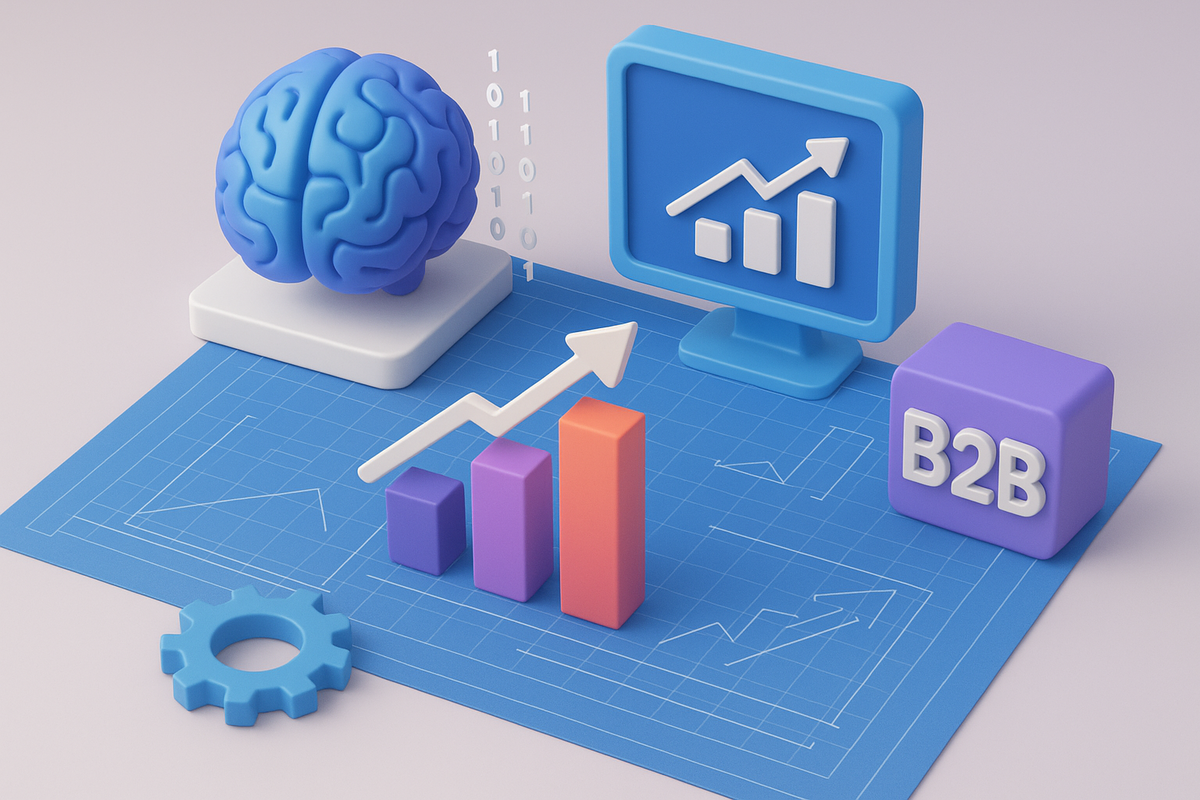In 2025, artificial intelligence (AI) is not just a marketing add-on it’s the core engine driving demand generation success. B2B marketers are facing unprecedented challenges: longer sales cycles, data overload, and a crowded digital ecosystem. Traditional lead generation tactics are no longer enough.
AI-powered demand generation has emerged as the new blueprint enabling marketers to move from guesswork to precision, from reactive campaigns to predictive engagement. The result? Smarter targeting, stronger personalization, and significantly higher ROI.
1. What Is AI-Powered Demand Generation?
AI-powered demand generation refers to the integration of machine learning, predictive analytics, and automation to attract, nurture, and convert high-quality leads. Instead of manually guessing who might be interested, AI systems analyze vast data sets to identify patterns, predict intent, and personalize outreach at scale.
Key AI Applications in Demand Gen:
-
Predictive Lead Scoring: Identifies leads most likely to convert using behavioral and historical data.
-
Intent Data Analysis: Tracks online behavior to gauge buying intent in real time.
-
Content Personalization: Uses AI to tailor messages and offers for each stage of the buyer’s journey.
-
Automated Nurture Campaigns: Engages prospects through AI-driven email, chatbots, and social interactions.
This approach transforms marketing from broad targeting to data-driven precision — ensuring resources are spent where they matter most.
2. Why AI Is the Game-Changer for B2B Growth
The B2B buying journey has become complex, involving multiple decision-makers and longer evaluation periods. According to Gartner, 77% of B2B buyers describe their last purchase as “complex or difficult.”
AI simplifies this by automating intelligence gathering, segmentation, and timing — helping marketers deliver the right message at the right moment.
Benefits Driving the Shift:
-
Enhanced Lead Quality: AI filters out unqualified prospects and surfaces high-intent accounts.
-
Faster Conversions: Predictive insights accelerate pipeline velocity by focusing on ready-to-buy leads.
-
Improved ROI: Automated targeting reduces wasted ad spend and boosts marketing efficiency.
-
Deeper Personalization: AI tailors engagement at scale, strengthening brand-to-buyer relationships.
By learning continuously from campaign data, AI refines strategies over time — ensuring demand generation becomes more accurate and profitable with every interaction.
3. The AI Demand Gen Framework: A Step-by-Step Blueprint
Implementing AI in your B2B demand generation strategy doesn’t have to be overwhelming. Here’s a simple five-step framework to get started:
Step 1: Define Your Ideal Customer Profile (ICP)
Feed your AI systems with historical sales and CRM data to identify common traits among your best customers — industry, company size, and behavioral signals.
Step 2: Integrate Predictive Analytics
Adopt tools that leverage predictive modeling to score leads and forecast demand trends. This ensures sales teams focus only on high-probability accounts.
Step 3: Automate Personalization
Use AI-driven platforms to dynamically personalize landing pages, emails, and ads based on user behavior. Personalization can increase conversion rates by up to 202%, according to HubSpot.
Step 4: Activate Smart Nurturing
Deploy AI chatbots and automated sequences that engage leads instantly, answer queries, and guide them to relevant content — reducing friction in the buyer journey.
Step 5: Measure, Learn, and Optimize
Leverage AI analytics to track engagement metrics, attribution, and conversion patterns. Machine learning models can continuously refine audience targeting and campaign performance.
4. Real-World Example: How AI Transformed a B2B Campaign
A leading SaaS company implemented AI-powered predictive analytics to revamp its demand generation.
Before AI, its conversion rate from MQL to SQL was only 12%. After integrating AI scoring and content personalization, the rate jumped to 37% within three months — a 208% increase in qualified pipeline.
The AI model identified patterns among existing customers, highlighting previously overlooked accounts that matched high-conversion profiles. Sales teams could then prioritize smarter, not harder.
5. Overcoming Challenges in AI Demand Generation
While the potential is immense, AI adoption isn’t without obstacles.
Common Challenges:
-
Data Silos: Disconnected systems hinder AI accuracy.
-
Lack of Skilled Talent: Teams need to understand AI tools and interpret data effectively.
-
Ethical Concerns: Transparency and responsible AI use are critical for buyer trust.
Solutions:
-
Unify CRM, analytics, and marketing automation platforms.
-
Upskill marketing teams in AI literacy and data interpretation.
-
Adopt transparent AI policies that respect privacy and fairness.
Conclusion: The Future of B2B Growth Is Predictive
AI is not replacing marketers it’s empowering them. In 2025 and beyond, AI-powered demand generation will define the next era of B2B success by combining human creativity with machine precision.
Businesses that embrace AI now will lead in efficiency, scalability, and profitability leaving competitors reliant on outdated strategies far behind.

